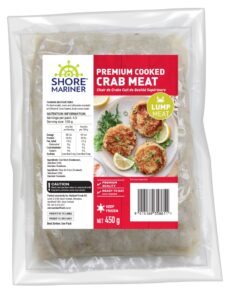Frozen Seafood: Preparation Tips For Frozen Seafood Recipes
Cooking a meal from mixed frozen seafood can be easy and flavourful. You can bake, steam, poach and even cook fish fillets directly from frozen! Just remember to cook the dish for as long as specified in the recipe.
Retailers and consumers have varying attitudes toward cooking directly from frozen. In a recent study, a food waste intervention was developed that focuses on two direct-from-frozen recipes.
How to find a supplier
 Whether you are buying frozen seafood for an upcoming event or simply because you prefer the taste of fresh fish, it is important to choose the right supplier. Many online resources can help you find the best frozen seafood supplier for your needs. It would be best if you looked for a supplier that offers high-quality seafood and competitive prices. In addition, the company should be able to ship your seafood quickly and efficiently.
Whether you are buying frozen seafood for an upcoming event or simply because you prefer the taste of fresh fish, it is important to choose the right supplier. Many online resources can help you find the best frozen seafood supplier for your needs. It would be best if you looked for a supplier that offers high-quality seafood and competitive prices. In addition, the company should be able to ship your seafood quickly and efficiently.
They receive multiple deliveries every week, which allows them to provide fresh, quality seafood products to their customers. They also can accommodate special requests and run promotions. It gives them the opportunity to increase gross profit and keep their customers happy. They also provide a variety of value-added products, such as surimi crab sticks and seafood mix. They are an excellent choice for anyone looking to make a delicious meal with mixed seafood.
Tips for thawing frozen seafood
Frozen seafood may have gotten a bad reputation, but it has recently been getting a lot of attention thanks to its ability to deliver delicious meals quickly and easily. Flash-frozen at peak condition, frozen fish and shellfish are often much better than the fresh stuff you get from a regular grocery store. However, it is important to pay special attention to the seafood you buy and how you prepare it. If you are buying frozen fish and shellfish from a reputable seafood market, it will be securely packaged and completely frozen to ensure optimal freshness. It is also important to remember that frozen fish must be cooked promptly and not kept under refrigeration for too long.
If you are purchasing mixed frozen seafood, make sure it is properly labelled to indicate that it is safe for freezing. The packaging should also be made of a material that will retain its moisture content and protect it from freezer burn and oxidation. It is also important to keep in mind that seafood should always be stored in the freezer at a temperature below forty degrees Fahrenheit.
Avoid defrosting frozen fish or other seafood in hot water, as this can result in bacteria growth and rubbery texture. You can instead thaw seafood in the fridge overnight or, if you are cooking it immediately after purchase, submerge it in cold water. Just be sure to change the cold water frequently to ensure that it never dips below forty degrees Fahrenheit, which is the bacteria danger zone.
Cooking frozen seafood
If you want to cook seafood without thawing it first, you have a couple of options. One way is to submerge it in cold water, which works surprisingly quickly. The other way is to put it in a leak-proof bag and microwave it in short intervals. However, both methods increase the risk of bacteria growth. Avoid thawing seafood at room temperature, which can lead to food poisoning.
Frozen seafood can be cooked in any recipe, but if you are using it for fish recipes, it is best to defrost it first. It will help it reheat evenly and prevent the outer layer from becoming tough or rubbery. If you don’t have time to thaw seafood, you can always bake it in the oven or add it to soups and pasta dishes.
Another easy and tasty seafood dish is seafood stew in tomato sauce. You can use a mixture of frozen calamari, mussels and shrimps or even peeled prawns to make this hearty and satisfying meal. The trick is to avoid overcooking it, as the meat will become tough if you do so.
Buying frozen seafood
When buying mixed frozen seafood, it’s important to check that the product has been properly frozen. If the seafood is not frozen quickly enough, it can dehydrate and lose flavour, texture and shelf life. Excessive ice crystals on the outside of a package can indicate this issue. It’s also a good idea to check that frozen seafood is kept at a constant temperature during storage and distribution.
Seafood is a healthy part of a balanced diet and provides essential nutrients like omega-3 fatty acids and vitamins A and B vitamins. Because it is high in protein, seafood can help you feel full and satiated. However, it is important to cook seafood thoroughly before eating it. It reduces the risk of foodborne illness and can also kill harmful bacteria.